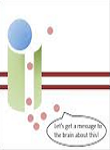|
|
|
Herbal Compounds: Important Role as TRPV1 Channel Modulator in Pain Sensation
|
|
|
|
|
|
|
|
|
|

|
|
|
|
Saikat Chakraborty, PhD
|
|
|
|
Stony Brook University
|
Departmentof Anesthesiology, Stony Brook Medicine, Stony Brook, NY 11794-8081, USA
|
|
Saikat.Chakraborty@stonybrookmedicine.edu
|
|
|
|
|
|
|
|
|
|

|
|
Ion channels play a significant role in pain perception. Among them, transient receptor potential cation channel subfamily V member 1 (TRPV1) expressed in dorsal root ganglia (DRG) neurons plays a pivotal role. Considering the potential side effects and high risk of dependence from opiates commonly co-prescribed with non-steroidalanti-inflammatory drugs (NSAIDS), alternative compounds from plants need to be identified. For years, herbal medicines treated pain worldwide, but their precise action was not clear until recently. The role of individual ion channels inpain detection and transmission can be separated and understood better now than ever before. Additionally, through improvements in active compound purification techniques and alteration of active compounds by synthetic chemistry, many herbal and naturally derived compounds are waiting to be screened for their probable role as analgesic. In this small review, some very familiar plant-based compounds, which act on TRPV1 channels and in turn influence pain sensation are discussed.
|
|
|
|
|
|
|
|

|
|